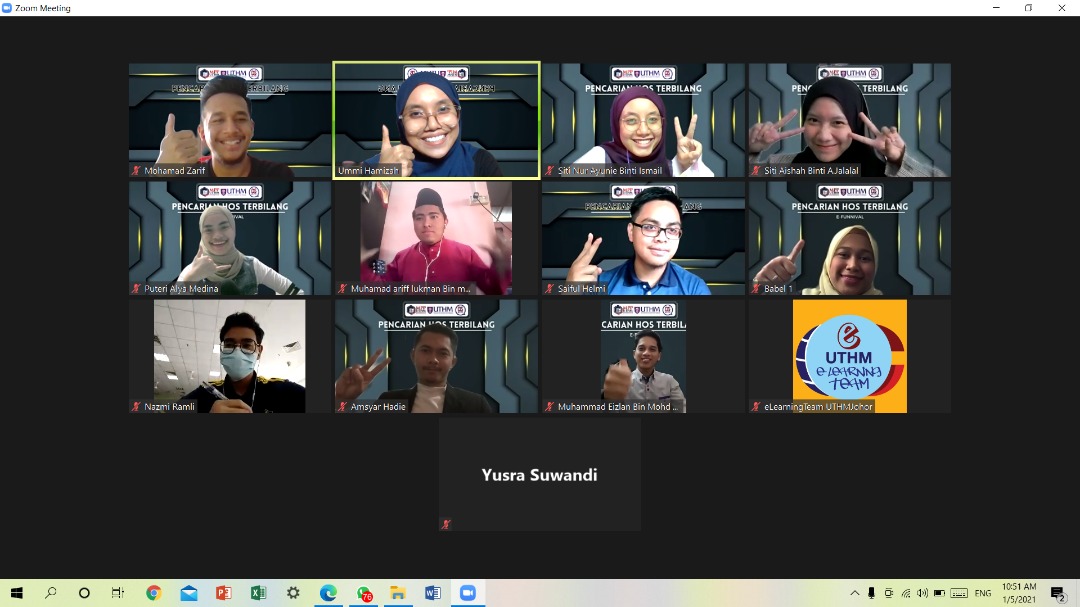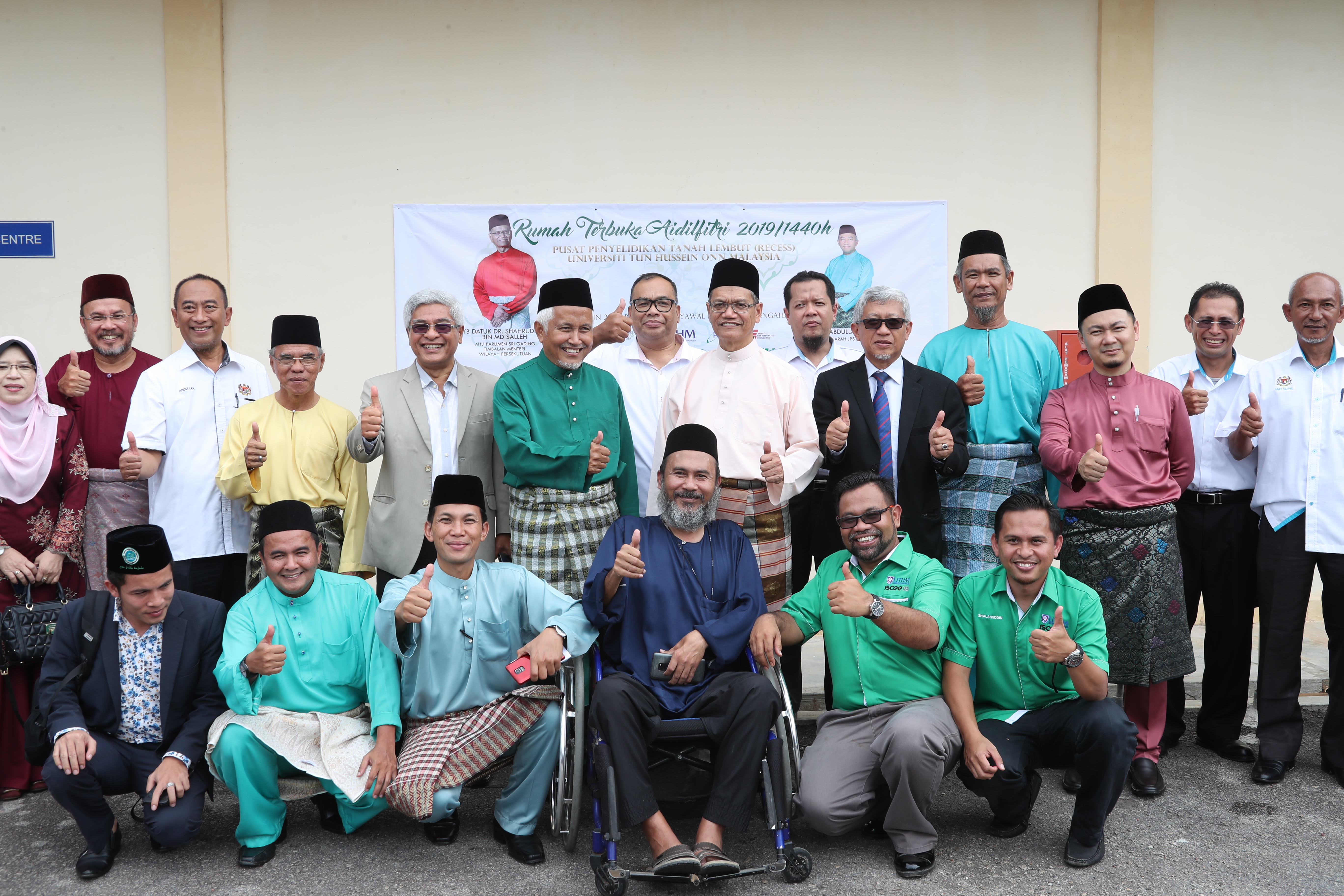
by Ts. Dr. Roslinda Ali
 These days, entrepreneurship is a hot topic to discuss. Foreign agencies have been organising numerous courses and activities related to entrepreneurship to approach people to get involved in this field. The Malaysian Government itself takes this issue seriously. Entrepreneurship has been a topic of discussion since the Second Malaysia Plan (RKM) through the New Economy Policy (NEP). The introduction of entrepreneurship was done to narrow down the income gap between the Bumiputera and non-Bumiputera at the time. Subsequently, entrepreneurship subject has been introduced to schools and universities to introduce the concept of entrepreneurship to the students. Besides, it is also one of the most important elements of the National Blue Ocean Strategy (NBOS).
These days, entrepreneurship is a hot topic to discuss. Foreign agencies have been organising numerous courses and activities related to entrepreneurship to approach people to get involved in this field. The Malaysian Government itself takes this issue seriously. Entrepreneurship has been a topic of discussion since the Second Malaysia Plan (RKM) through the New Economy Policy (NEP). The introduction of entrepreneurship was done to narrow down the income gap between the Bumiputera and non-Bumiputera at the time. Subsequently, entrepreneurship subject has been introduced to schools and universities to introduce the concept of entrepreneurship to the students. Besides, it is also one of the most important elements of the National Blue Ocean Strategy (NBOS).
Entrepreneurship has begun to expand from only business activities to political and social activities as time passed. Entrepreneurship activities done in large corporations are known as intrapreneurship; which embraces corporate management practices that incorporate risk-taking and innovation approaches, as well as motivational and rewards techniques. Recently, the term ‘entrepreneurship’ has expanded and special elements have been incorporated into the result of new entrepreneurship initiatives such as corporate entrepreneurship, franchise entrepreneurship, digital entrepreneurship, eco-entrepreneurship, social entrepreneurship and the latest; sustainable entrepreneurship (sustainopreneurship).
The term ‘sustainopreneurship’ has been used officially in academic publications by Gerlach in 2003. He introduced this term in a paperwork presentation on Sustainable Management in Action at the University of St. Gallen, Switzerland. Abrahamsson in his 2007 study defines sustainopreneurship as a causal business – where it uses business management to solve environmental and social sustainability issues. In other words, in sustainopreneurship, environmental and social sustainability issues with innovation implemented are used as business opportunities to solve world issues, gain social satisfaction and financial rewards.
Recently, the business trends in western countries have begun to change from a solely profit-oriented business to a sustainable business. We are living in a modern age where we use a large amount of energy every day. The world’s population is estimated to use approximately 40% of energy resources annually and these could not be restored. This lifestyle needs to be changed to ensure that future generations will not be affected by our actions.
Numerous historical evidences show that past civilisation has destroyed nature and it has given critical impacts on human survival and other habitats. Sustainability takes into account on how we can live harmoniously in a natural environment without destroying the world. One of the world’s famous individual who fought for environmental conservation rights is Elon Musk. He is a billionaire and one of the sustainopreneurs. His mission is to help transform the world by reducing global warming through the production and use of sustainable energy. Among his inventions that gained international markets are electric vehicles and powertrain control systems used by luxury vehicles such as Mercedes and Toyota.
How to be a sustainopreneur in Malaysia?
Nearly 95 percent of existing businesses in Malaysia are conventional businesses. Their main business goal is only to achieve profits. They are not concerned with empathy and environmental and social sustainability. They think this existing business cannot be changed to become a sustainable business but they are wrong. Every existing business can be changed towards sustainability and the entrepreneurs only need to change their way of thinking. The concept of conventional entrepreneurship and sustainable entrepreneurship is not that much of a difference. Entrepreneurs still need to think out of the box to make their businesses competitive. What distinguishes between conventional and sustainable entrepreneurship is the conventional business of profit-oriented merely while sustainable businesses are motivated to seek solutions to environmental and social sustainability problems. Profit is not the main motive in sustainable businesses.
Let’s take for example, a school canteen. Most canteen operators do not maintain the canteen cleanliness. They often dispose food and oil waste into the nearby drains, resulting in clogged and smelly drains. There are several steps towards sustainability that can be taken to solve this problem.
First, the oil waste. The owners can install oil filters to ensure that the oil waste does not contain harmful substances and can be sent directly for disposal. Additionally, the resulting residual oil can also be put into plastic bottles and made into ecobricks. Ecobricks are plastic bottles stuffed with plastic waste, solid material and non-biological waste to create reusable building blocks. Ecobricks can be used to create furniture, crop beds and full-scale buildings such as schools and homes by using some of the latest technologies.
Second, the food waste. The food waste can be collected and made as compost fertiliser. This fertiliser can then be used and resold to generate income. Even if the goal of sustainable business is not to earn a profit, entrepreneurs can still generate revenue from the solution. In the case of canteen operators, if they are practicing sustainable businesses, they are not only maintaining a clean environment and producing cleaner and nutritious food but they can also generate income from ecobricks and compost fertilisers.
The change of perspectives from conventional entrepreneurial minds to sustainable entrepreneurial minds should be applied to the society generally and in particular to new entrepreneurs and also to the existing entrepreneurs. The question is, are Malaysians ready to take this step? Will we able to change our minds and perceptions towards the main focus of the business which is to preserve sustainability that threatens the stability of the world? Will we able to perceive profit rewards as not the main focus of the business? The answers are in your hands.
:: Author is a Senior Lecturer, Department of Civil Engineering Technology, Faculty of Engineering Technology, UTHM









